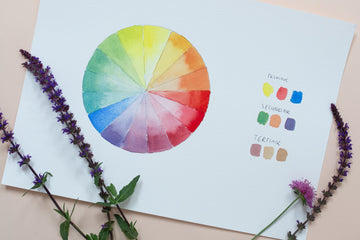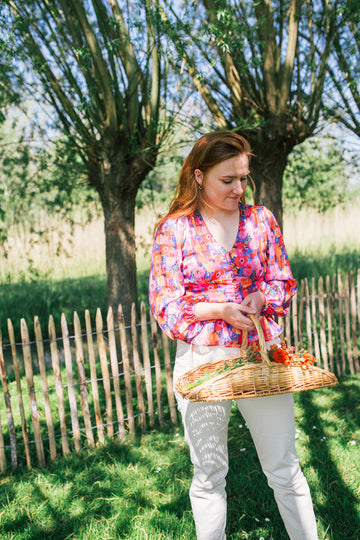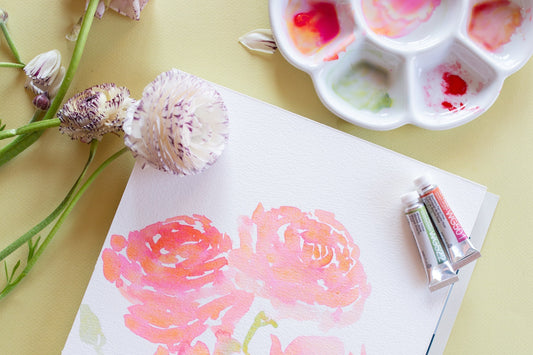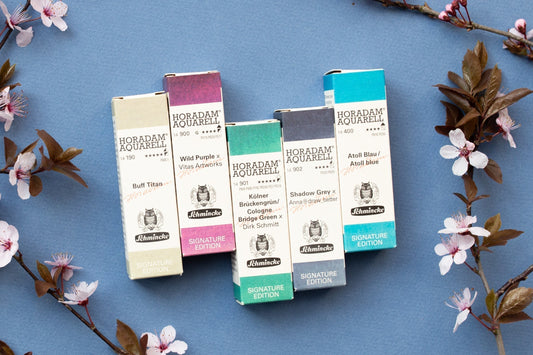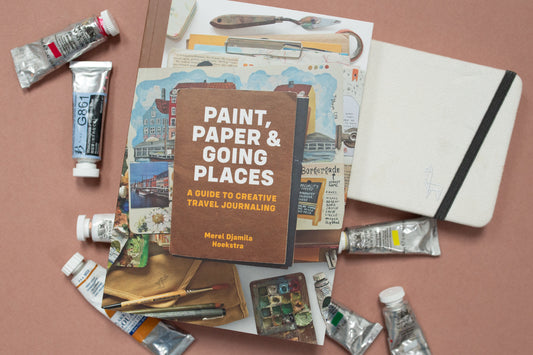Watercolor is known for its bright, translucent properties and the beautiful effects you can achieve by mixing colors. With a watercolor palette of around 12-24 colors, you have a wide range of possibilities to create endless shades and nuances. In this blog, we will take you through the art of color mixing and give you practical tips to get the most out of your palette.
Why mix colors?
Mixing colors is essential if you want to create that depth and personality in your work. By mixing colors you can:
- Create new shades: discover colors that aren't in your original set. Mixing opens up so many more colors!
- Unique Shades: Create custom colors that make your artwork unique.
- A harmony in your palette: Make sure your colors match each other well, which is important for the coherence of your painting.
- Depth and Texture: Add complexity and richness to your work by using layers of mixed colors.

Basics of Color Mixing
Before you start mixing colors, it's helpful to understand some basic principles:
- Primary colors: Red, blue and yellow. These colors cannot be mixed from other colors.
- Secondary colours: Orange, green and purple. These are created by mixing two primary colours.
- Tertiary colors: These are formed by mixing a primary color with a secondary color.
Steps to Mix Colors
Here are some practical steps to mix colors effectively with your 24-color palette:
1. Make swatches
Start by making test strips of each color in your palette. This will help you understand how each color looks on paper and how they behave with different amounts of water.
2. Use a Color Wheel
A color wheel is a handy tool to see which colors blend well together. Experiment with mixing colors that are next to each other (analogous) for harmonious hues, and colors that are opposite each other (complementary) for contrasting effects. We also sell color wheels in the shop that you can use as a reference.
3. Start with the Basics
Mix primary colors to create secondary colors. For example, mix Hansa Yellow Light with Quinacridone Rose to create a bright orange.
4. Experiment with Proportions
Try mixing different ratios of colors to create a wide range of shades. A little more of one color can make a big difference.
5. Layer upon Layer
Watercolor is great for layering. Start with light washes and gradually add deeper, more intense colors. This can create interesting effects and depth.

Tips for Successful Color Mixing
- Use clean water: Change your water regularly to prevent unwanted contamination of colors.
- Work wet-on-wet: For soft transitions and blended colors directly on the paper, apply wet paint to a wet surface.
- Try dry on wet: For sharper edges and more defined blends, apply dry paint to a wet surface.
- Granulation Effects: Some colours in the Daniel Smith watercolour range , such as Moonglow, have unique granulation properties. Experiment with this by moving and mixing the paint in different ways.
- Mix all the colours together, in this blog we will tell you how you can easily do that too.
Conclusion
By experimenting, you can discover a world of colors and nuances in watercolor. Mixing colors is a skill that can be developed through practice and patience, and the results are worth it. So grab your brush , mixing palette , and let your imagination run wild, and enjoy the creative process of mixing colors!
Love,
Judith

